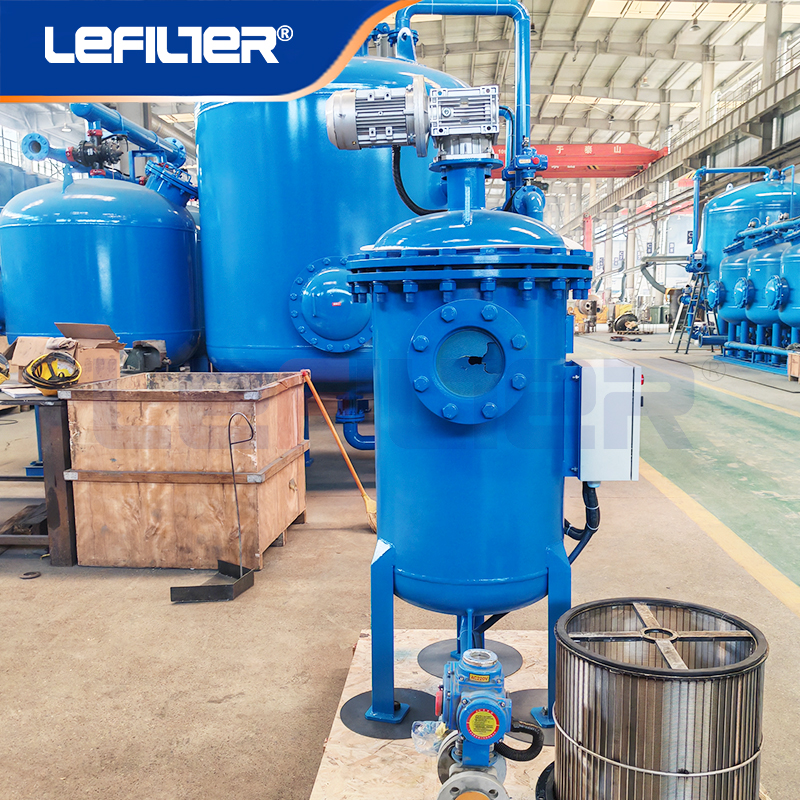Self-Cleaning Filter: Selection Guide and Maintenance Tips for Optimal Performance
DATE:2025-03-28 Number of views: 1 Source:jiaxiangting
In industrial and municipal water treatment systems,self-cleaning filters have become indispensable for maintaining efficiency while minimizing manual intervention. Whether you need a brush automatic self cleaning filter , an automatic backwash water filter , or a self cleaning strainer, selecting the right system and implementing proper maintenance practices are crucial for long-term reliability.
This guide provides expert recommendations on choosing the most suitable self-cleaning filter based on filtration requirements, flow rates, and water quality. Additionally, we outline essential maintenance practices to ensure consistent performance and extended equipment lifespan.
How to Choose the Right Self-Cleaning Filter
Selecting the ideal self-cleaning filter depends on several key factors, including filtration precision, flow capacity, and the nature of contaminants. Below, we explore the most critical selection criteria to help you make an informed decision.
1. Determine Filtration Requirements
The first step in choosing a self-cleaning filter is assessing the required filtration level.
•Microfiltration (50-100 microns) –Suitable for removing sand, silt, and larger particles in irrigation or cooling systems.
•Fine Filtration (10-50 microns)–Ideal for industrial process water, food & beverage applications.
•Ultrafine Filtration (1-10 microns)–Necessary for high-purity applications like pharmaceuticals or electronics manufacturing.
A brush automatic self cleaning filter is excellent for sticky or fibrous contaminants, while an automatic backwash water filter works best for granular particles in high-flow systems.

2. Evaluate Flow Rate and System Pressure
•Low to Medium Flow (Up to 500 GPM)–A compact self cleaning strainer may suffice.
•High Flow (500-5000+ GPM)–Requires a robust automatic backwash water filter with multi-port valves for uninterrupted operation.
•High-Pressure Systems - Ensure the filter housing is rated for the operating pressure to prevent leaks or failures.
3. Analyze Water Quality and Contaminant Type
•Suspended Solids (Sand, Silt, Rust)– A self cleaning strainer with a stainless-steel mesh is effective.
•Organic Matter (Algae, Biofilms)– A brush automatic self cleaning filter with scrubbing action prevents buildup.
Oil & Grease Contamination –Specialized coalescing filters may be needed alongside standard self-cleaning filters .
4. Consider Automation and Control Options
•Differential Pressure Control–Automatically triggers cleaning when pressure drop exceeds a set limit.
•Timer-Based Cleaning –Useful for predictable contamination levels.
•PLC Integration –Allows remote monitoring and adjustment in smart water treatment systems.
Essential Maintenance Practices for Self-Cleaning Filters
While self-cleaning filters significantly reduce manual maintenance, periodic inspections and servicing are still necessary to ensure peak performance.
1. Regular Inspection of Cleaning Mechanism
• For brush automatic self cleaning filters, check bristle wear and motor function.
• For automatic backwash water filter, verify solenoid valves and backflush efficiency.
• For self cleaning strainers, inspect screen integrity and alignment.
2. Monitor System Pressure and Flow Rates
A sudden pressure increase may indicate clogging, while a drop could suggest a leak or bypass malfunction.
3. Check Electrical Components and Sensors

• Test control panel settings and alarms.
• Clean and calibrate pressure transducers and flow meters annually.
4. Examine Piping and Seals
• Look for corrosion, leaks, or vibration-induced loosening.
• Replace worn O-rings and gaskets to prevent bypass contamination.
5. Validate Filtration Efficiency
Periodically test effluent quality to confirm the self-cleaning filter is meeting performance standards.
FAQ: Self-Cleaning Filters
Q: How often does a self-cleaning filter require maintenance?
A:Most systems need only biannual inspections, though harsh environments may require quarterly checks.
Q: Can these filters handle seawater or corrosive chemicals?
A:Yes, models with 316L stainless steel or plastic housings are available for aggressive media.
Related product:


